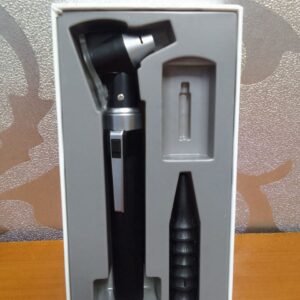Electrosurgical (Diathermy) Pencil – Precision Cutting & Coagulation Tool
An Electrosurgical (Diathermy) Pencil is a specialized surgical instrument used in electrosurgery to cut, coagulate, or cauterize tissue using high-frequency electrical energy. It is widely used in general surgery, dermatology, gynecology, and other medical fields to enhance precision, reduce bleeding, and minimize tissue damage.
Key Features
✔ High-Frequency Electrical Energy – Allows precise cutting, coagulation, and cauterization.
✔ Ergonomic, Lightweight Design – Ensures comfortable handling and control during surgery.
✔ Button or Footswitch Activation – Provides easy operation for different surgical techniques.
✔ Disposable & Reusable Options – Available in single-use sterile or reusable models.
✔ Compatible with Various Electrosurgical Units (ESUs) – Works with standard diathermy machines.
✔ Replaceable Electrodes – Accommodates different tip sizes and shapes for various procedures.
Common Uses
🔹 Tissue Cutting & Incision – Enables precise surgical cuts with minimal bleeding.
🔹 Coagulation & Hemostasis – Helps in sealing blood vessels to control bleeding.
🔹 Cauterization – Prevents infection and promotes healing by sealing tissue.
🔹 Soft Tissue Surgery – Used in general, plastic, and gynecological surgeries.
🔹 Tumor or Lesion Removal – Common in dermatology and oncology procedures.
Types of Electrosurgical Pencils
- Monopolar Electrosurgical Pencil – Requires a grounding pad to complete the circuit.
- Bipolar Electrosurgical Pencil – Current passes between two tips, reducing tissue damage.
- Smoke Evacuation Electrosurgical Pencil – Includes a built-in smoke suction system for a clear surgical field.
How to Use
- Connect to an Electrosurgical Unit (ESU) – Ensure proper compatibility and settings.
- Choose the Appropriate Tip – Select the electrode size and shape based on the procedure.
- Adjust Power & Mode – Set the cutting or coagulation mode as needed.
- Activate the Pencil – Use button or footswitch control for precision operation.
- Perform Surgery Carefully – Apply controlled movements to minimize thermal spread.
- Dispose or Sterilize – Follow proper sterilization or disposal protocols for safety.




Reviews
There are no reviews yet.